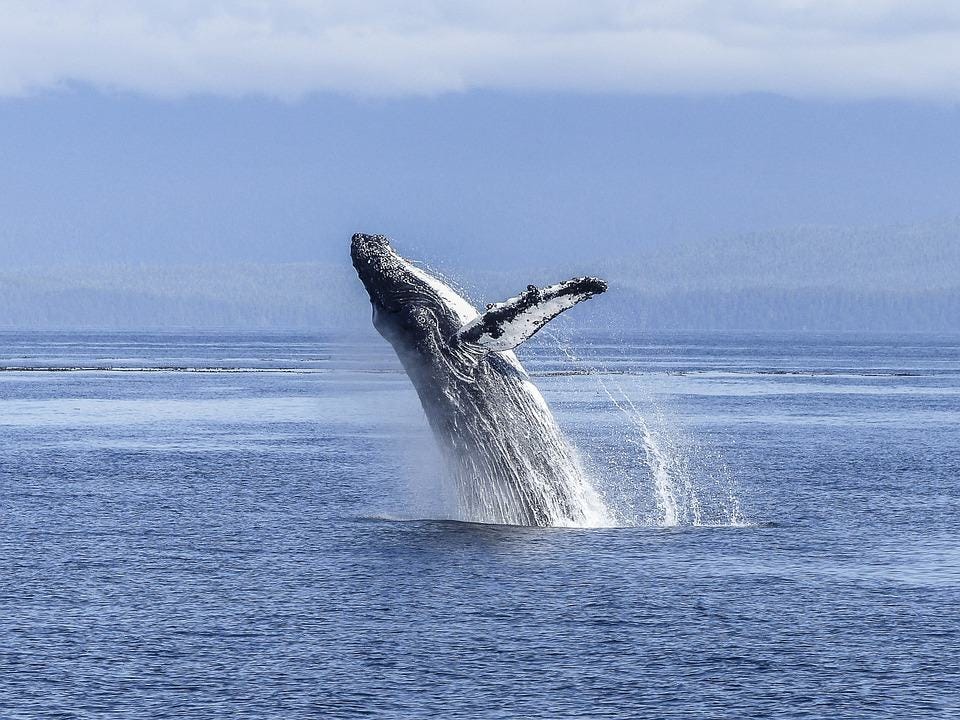Whales Vs Humans: Who is more Intelligent?

A couple of weeks back Archana and I got the movie – In the Heart of the Sea – which is based on the events that inspired the American classic Moby Dick. The movie plot is around this whale – (presumably a White Sperm Whale) – which attacks seamen who are in the business of killing whales for their oil.
The movie shows how the whale (the protagonist) not jut attacks but waits for the seamen who have landed and start off again on the sea – to engage with them again. The Whale remembers and has the intelligence to go for people who it feels are harmful and planning its kill. Don’t let these tales put you off experiencing whales in the flesh. For example, San Diego has grey whale watching, allowing you to experience them with your own eyes. All of this shouldn’t put you off doing this, if anything it should teach you that you are safe as long as you do not try to harm them. These creatures are magnificent creations, and we should treasure them for as long as we have them. If you do want to go and see the, taking a trip out to sea to see them, for example going whale watching california way can be a fascinating once in a lifetime experience that everyone should aim to do at least once.
Two whaling stories are very close to the plot of the movie one is obviously about the whale which destroyed the ship Essex in 1820 and the other is about a whale called the Mocha Dick.
Whales Vs Humans: Who is more Intelligent? #Religion #Whales Click To Tweet
Mocha Dick was a 70 foot white sperm whale which was first sighted near the Mocha Island off the Chilean coast. In a timespan of 28 years, Mocha Dick was attacked by around 100 whaling ships and it destroyed 20 of them. Mocha escaped all the 100 attacks before succumbing to the last one. Its death is something that legends are made of. Here is how it happened.

According to famed explorer and writer Jeremiah N. Reynolds, Mocha Dick finally met his downfall after observing a mother whale whose calf had just been killed by whalers. The mother whale first attempted to herd her calf away from the whalers after it had been harpooned, but soon the calf went belly up. When the whale realized her calf was dead, she turned on the whalers and attempted, unsuccessfully, to destroy their ship. Instead, she herself was harpooned and mortally wounded before she was able to strike the ship.Upon observing all this, Mocha Dick decided to get in on the fray and also attacked the whaling ship directly after the missed hit by the mother. Mocha Dick successfully destroyed one of the smaller whaling boats, but was injured in the process by a harpoon.
Even though religious humans are so full of themselves that they think that Cosmic God is in the image of man, the fact remains that whales’ intellgence is phenomenal – even greater in many ways to the humans.
Human brains have 19-23 billion neocortical neurons in humans (19bn for females and 23 bn for males). The Neocortical neurons are used for sensory perception, generation of motor commands, spatial reasoning, conscious thought and language.
The whales on the other hand have twice as many neocortical neurons – 37.2 billion.
One thing that whales beat humans on is the way they communicate. They communicate in what can be likened to Auditory holograms! This is because the primary sense for cetaceans is the same as the primary sense of communication – which is auditory. For humans the primary sense is visual, while the one for communication is auditory.
Cetacean sound producing and analyzing abilities are so adept that it is possible for a cetacean to project an auditory image identical to the sonar image they would receive (Bunnel 1974, Sagan 1975). So a dolphin wishing to convey the image of a fish to another dolphin can literally send the image of a fish to the other animal. The equivalent of this in humans would be the ability to create instantaneous holographic pictures to convey images to other people.
The ability to use the auditory sense also allows the cetaceans to convey and receive 20 times the information that humans can with their hearing and is also more than the information processed by our primary sense – vision!
Another factor of cetacean auditory abilities of interest is the vast amount of information conveyed (Lilly 1975). They are able to produce sounds commonly up to 200 kilocycles/second, 5 a range 2 1/4 times what our own hearing can comprehend. Cetaceans also have approximately 2 1/4 times the number of neurons receiving the input. Add that onto the fact that they have several sound production organs,6 and it is apparent that cetaceans can convey and receive 20 times the amount of information as we can with our hearing. This even surpasses the amount of information we receive visually, but not by a great deal.
Imagine what would have happened if the whales could express themselves in a way that humans can understand. Or if we had a way to understand the amazing way the whales can actually communicate. Working with beings of such higher intelligence would have benefited humans a great deal.
Featured Image: Pixabay



